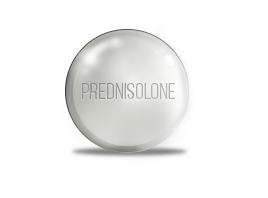Cephalexin - antibacterial agents for systemic use. Cephalosporins of the first generation. Used in the treatment of infections caused by microorganisms susceptible to cefalexin: ENT organs and respiratory tract, genitourinary system, skin and soft tissues, bone tissue and joints.

Erythromycin is a macrolide antibiotic of bacteriostatic action. In high concentrations and relatively high-sensitivity microorganisms may have a bactericidal effect.

FML (Fluorometholone) Forte is a topical drug that belongs to the corticosteroid group of medicines. Its aim is to cure various eye problems connected with injury and inflammation. It is effective in case of bulbar conjunctiva and palpebral conjunctiva. The suspension remedies eye swelling, itching, irritation, and redness. These eye drops are not recommended to people who wear contact lenses daily. If a patient must use the drops, it’s necessary to replace contact lenses with glasses or just not to wear them during the medication.

The antibiotic produced by Streptomyces lincolniensis, has a bacteriostatic effect. Suppresses protein synthesis of bacteria due to reversible binding to the 50S subunit of ribosomes, disrupts the formation of peptide bonds.
It is active against gram-positive cocci Streptococcus spp., including Streptococcus pneumoniae); Haemophilus influenzae; Bacillus anthracis, Mycoplasma spp., Bacteroides spp., Corynebacterium diphtheriae, Clostridium perfringens, Clostridium tetani.

Lisinopril is an antihypertensive, vasodilating, cardioprotective drug, an ACE inhibitor that is used to treat hypertension, heart failure, acute myocardial infarction, diabetic nephropathy.

A thiazide diuretic of the average intensity, applied in arterial hypertension, edema syndrome of different origin, gestosis and diabetes insipidus. Reduces reabsorption of Na+ at the level of the Henle loop cortical segment, without affecting its segment lying in the medulla of the kidney that detects a weaker diuretic effect compared with furosemide.

A blocker of H1-histamine receptors of the first generation, derived from ethanolamine; eliminates the effects of histamine, mediated through this type of receptors. Promotes the local anaesthesia (when intaken, there is a short numbing of the mucous membranes in the mouth) - only in high doses, it blocks m-cholinergic receptors in the central nervous system, has sedative, hypnotic, antiemetic and antiparkinsonian effects. The therapeutic indications include: allergic conjunctivitis, allergic rhinitis, chronic urticaria, pruritic dermatoses, dermatographism, serum sickness.

Prednisolone is a synthetic analogue of the adrenal cortex secreted by the hormones cortisone and hydrocortisone. Unlike cortisone and hydrocortisone, prednisolone does not cause a noticeable delay in sodium and water, and only slightly increases the release of potassium. The drug has a pronounced anti-inflammatory, antiallergic, anti exudative, anti-shock, antitoxic effect.

























